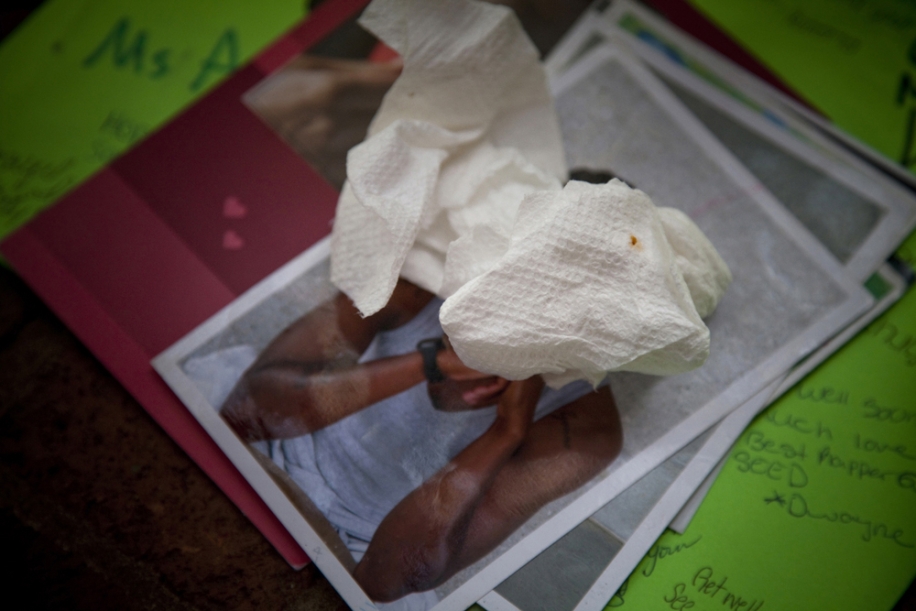

Lashonia Etheridge-Bey, 39, spent half of her life in prison for a double murder. She was paroled in December 2011. “Even though it was a split second decision that cost those women their lives, it was not just one decision. My life spiraled out of control as far as me being a teen mother, high school dropout, unemployed, drug addicted, alone. I was just immersed in a life of crime.”
Time Zone -- Incarceration and Reentry
Gabriela Bulisova and Mark Isaac | Washington, D.C., United States
Photographer: Gabriela Bulisova and Mark Isaac
Exhibit Title: Time Zone -- Incarceration and Reentry
Location: Washington, D.C., United States
Lashonia Etheridge-Bey, 39, spent half of her life in prison for the murder of two women. While her crime was violent and irreversible, Lashonia worked hard to transform her life in prison. She turned to Islam, immersed herself in classes, worked out intensively, and become a completely different person. Given her good behavior, she was paroled at her first hearing in December 2011.
The subjects of imprisonment and its aftermath are among the most important and overlooked topics in America today. With 7.1 million people under the supervision of correctional authorities, the U.S. has the highest incarceration rate in the world. In Washington, D.C., an estimated 60,000 people, or 10 percent of the population, have criminal records, and about 8,000 of them return to the city each year after serving time.
For many former prisoners, the basic tasks that face them upon release – getting housing, a job, and an education -- become overwhelming obstacles. Lashonia’s successful reentry has made her a role model for other ex-offenders. She quickly obtained housing, found a job, and continued her education.
TIME ZONE
Gabriela Bulisova
Lashonia Etheridge-Bey, 39, spent half of her life in prison for the murder of two women. While her crime was violent and irreversible, Lashonia worked hard to transform her life in prison. She turned to Islam, immersed herself in classes, worked out intensively, and become a completely different person. Given her good behavior, she was paroled at her first hearing in December 2011.
The subjects of imprisonment and its aftermath are among the most important and overlooked topics in America today. With 7.1 million people under the supervision of correctional authorities, the U.S. has the highest incarceration rate in the world. In Washington, D.C., the numbers are even higher. An estimated 60,000 people, or 10 percent of the population, have criminal records, and about 8,000 of them return to the city each year after serving time.
For many former prisoners, the basic tasks that face them upon release – getting housing, a job, and an education -- become overwhelming obstacles. Lashonia’s successful reentry has made her a role model for other ex-offenders. She quickly obtained housing, found a job, and continued her education.
However, the less perceptible currents of her life – rebuilding relationships with her family, and living with and answering for her past – have gone less smoothly. Lashonia struggles constantly with the question of whether she will be able to forgive herself. “People say: ‘You did your time, you paid your debt, and you deserve to forgive yourself.’ But is there really a debt that you can pay?”
Our Place, DC
www.ourplacedc.org
Gabriela.Bulisova@gmail.com
GabrielaBulisova.Photoshelter.com
Make Comment/View Comments